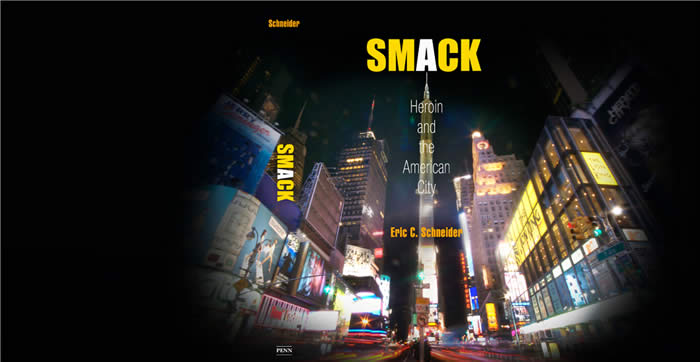

Smack is about two things: markets and the social environments in which people consumed heroin. New York City dominated a centralized national market from the 1920s until the 1970s because a handful of mostly Italian and Jewish illegal entrepreneurs controlled access to the European sources of heroin. Over time, new groups and new points of entry challenged New York’s supremacy, with African Americans, Cubans and Mexicans importing heroin from Southeast Asia, Latin America and Mexico through a variety of places. Ties to Latin America were particularly important, as increasingly large amounts of cocaine traveled along the same routes and set the stage for the emergence of crack cocaine as a new mass market product in the 1980s.
What did not change much was the location of retail marketplaces. Primary marketplaces located in poor African American and Latino communities, where unemployment was high and the underground economy, including drug selling, provided jobs in what was essentially the free market’s answer to deindustrialization. In addition, police sheltered some sellers while arresting others, thus waging an ostensible ‘war on drugs’ while taking advantage of opportunities for graft. The persistence of retail marketplaces in a neighborhood also encouraged the recruitment of the next generation of users and sellers as adolescents acquired the ‘drug knowledge’ needed to negotiate the market. As heroin use expanded, secondary heroin markets opened up in the suburbs closest to traditional heroin-using center cities. (Basically, venturesome users would make larger purchases in the primary marketplace and then return home and support their habits through sales to less-venturesome peers.)
Heroin consumption began among the socially and economically marginal, those most alienated from mainstream American life. The drug opened up an alternative way of organizing a life—dominated by the daily need to get money and score heroin. It also provided a means of identifying with particular subcultures, such as jazz musicians and neighborhood cool cats and hustlers in the 1940s and 1950s, counter culture drop outs in the 1960s, and punks and hipsters in later decades. These subcultures were both social and spatial entities and anchored heroin use in sets of institutions—bars, hangouts, vacant buildings—and specific neighborhoods.